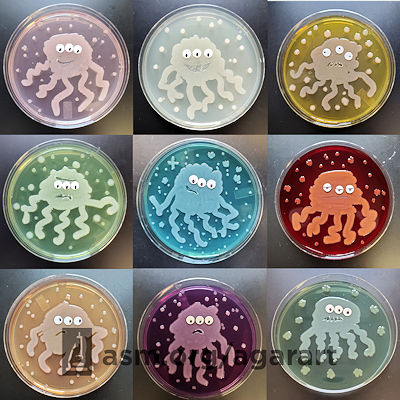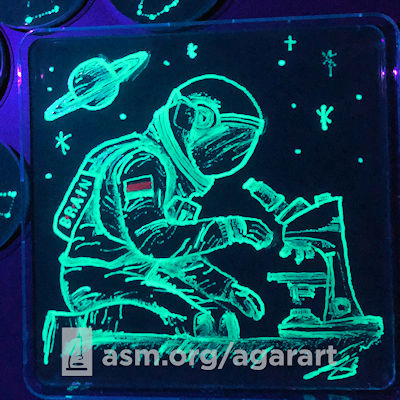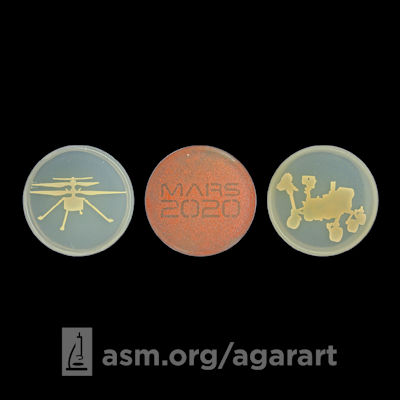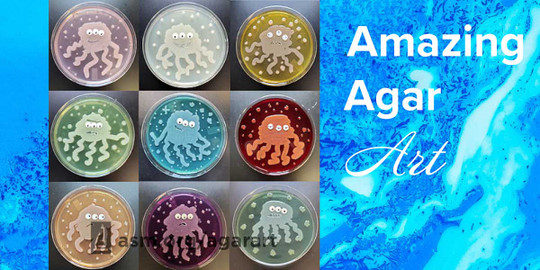Scientists are very creative, and this post is dedicated to their 'agar artistry'. This art form is created using living microorganisms in a petri dish. Naturally colorful microbes or even genetically modified ones are used as the canvas. Each year since 2015, ASM (American Society for Microbiology) holds an annual Agar Art contest. Entries have been featured worldwide including in displays, podcasts, and media outlets since it started. The ‘professional’ category is for those with access to lab space and materials, but the ‘Open’ category is for those using any artistic medium.
The contest saw a record-breaking number of submissions (390) from a whopping 37 countries. The year's theme, “Microbiology in Space” proved to be very inspiring.
This year’s winner hails from University Chicago, Ella Rotman’s submission entitled ‘Alien Medley’. Both capsulated and non-capsulated variants of Klebsiella pneumoniae were used to draw the aliens. The eyes are disks used for antibiotic susceptibility testing (AST), and the colors of the agar are indicator dyes. Most of the dyes are pH-dependent and will change color depending on the pH, but one of them (Resazurin) changes color when oxygen is present.

Taking second place in this category with ‘Agarnaut’ is Svenja Ries, a research technician at BRAIN Biotech AG in Germany. This astronaut is peering through his microscope on the hunt for rare microorganisms he can bring back to earth. The bacteria are genetically modified E. coli K12. The DNA used to prompt the color is derived from sea anemones. The cultures fluoresce when illuminated with UV light.

Rounding out the top 3 is an entry from Universidad de Chile, their piece ‘Microbial Perseverance’, by Camilo Berríos-Pastén, Amelia Cox-Fermandois, A. Victoria Suárez-Clerc, Hazajem Colque-Ferrer and Andrés E. Marcoleta. This entry is based on Mars 2020, a NASA mission. The Perseverance rover and Ingenuity drone are featured. Two different bacteria isolated from the Atacama Desert in Chile was used Plates were made by exposing bacteria to germicidal UV via stencils, to restrict microbes to covered areas. The stencils are based on images by NASA/JPL-Caltech.

We applaud these winning agar artists and the hundreds of others who brightened our year and we look forward to seeing what inspiring agar art they have in store for us next year.
Reference

